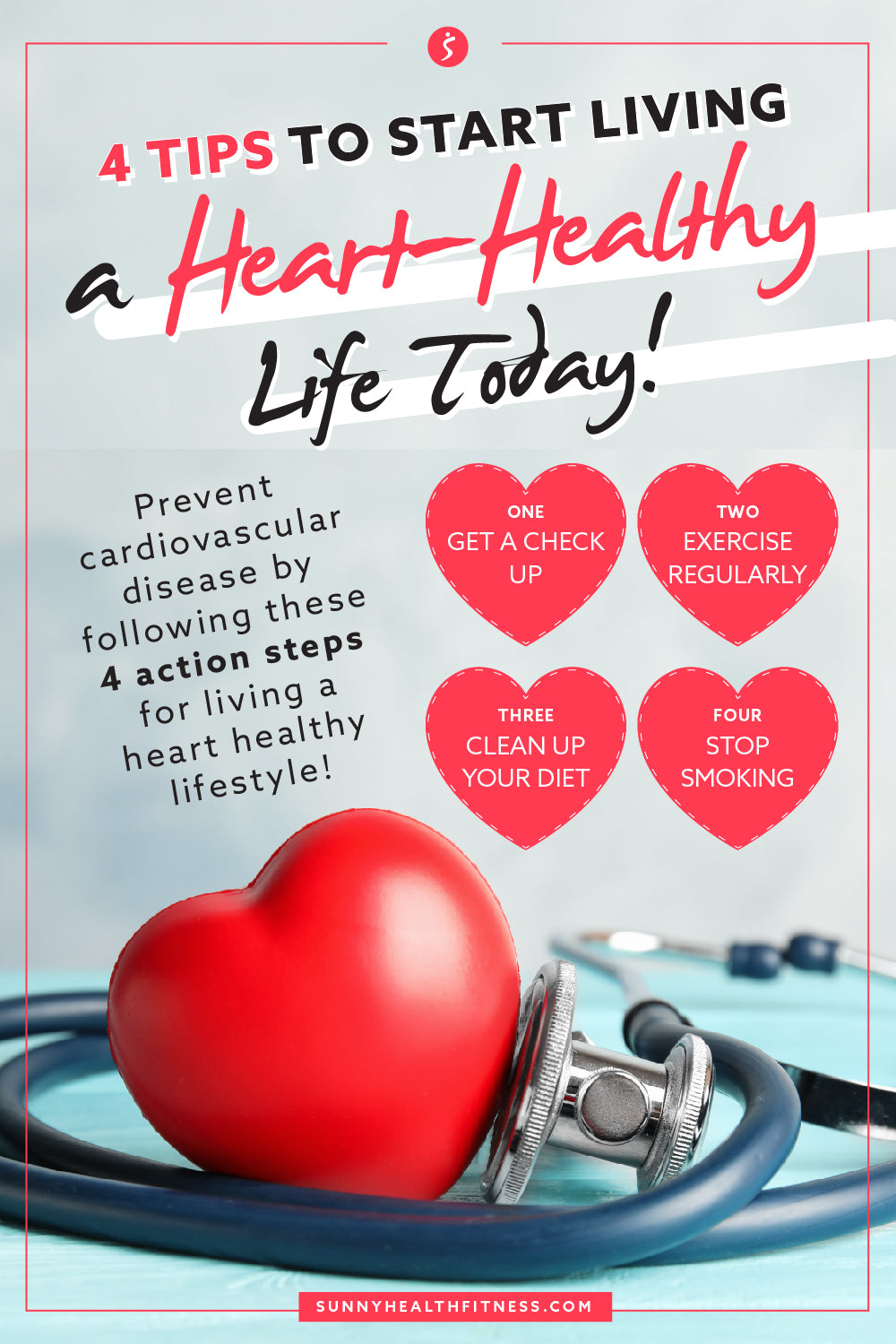Published 2/3/2021, updated 11/3/2025
Did you know Cardiovascular Disease (CVD) is the number one killer of Americans(1)? While some of your risk for heart disease may be inherited from your family, the majority of risk factors are preventable and in your control. Since February is American Heart Month, we want to give you the resources you need to start living a heart-healthy lifestyle. Keep reading below for 4 actionable steps you can take today to reduce your risk for CVD!
1. Get a Check Up
Many of the risk factors for CVD are preventable, but you won’t know how to create a successful prevention program without first evaluating your overall health. The first step to living a heart-healthy life is giving your doctor a visit.
Your doctor will be able to check your body mass index, blood pressure, cholesterol levels, and fasting glucose levels to make sure you’re cleared and healthy. If any of your tests come back too high, you may have a higher risk for heart disease, which is why it’s so important to go to regular checkups.
It’s important to understand that the results of your tests are not set in stone; they can improve, or get worse. It is possible to lower your body mass index, blood pressure, cholesterol, and fasting glucose levels by making healthy changes in your lifestyle.
However, it is also possible and likely to increase your risk by living an unhealthy lifestyle. So, if your tests do come back good, it’s not necessarily a free pass to eat bad, skip workouts, and go crazy.
It is much easier to prepare your body against preventable disease than it is to reverse years and years of unhealthy living. So, no matter what category you fall in - at risk, or not at risk, now is the time to start living a healthy lifestyle.
2. Exercise Regularly
Did you know that if you haven’t worked out at least 30 minutes at moderate intensity, 3 times a week, for the last 3 months you’re considered a sedentary adult? And sedentary adults are at higher risk for CVD.
While it may not seem like much, you’d be surprised at how many adults don’t reach these minimums. And that’s just enough exercise to get you out of being sedentary. For regular health, you’ll need even more exercise.
The American Heart Association recommends at least 150 minutes of moderate intensity activity or 75 minutes of vigorous intensity activity as well as 2 days of full body strength training, working all muscle groups(2). If you’re looking to start exercising regularly, this is a perfect place to start!
3. Clean Up Your Diet
Your overall diet contributes to your body mass index, cholesterol, and fasting glucose levels all important factors for heart health. Choosing to consume nutrient-dense whole foods filled with vitamins, minerals, protein, and fiber will keep you feeling full and satisfied and contribute to good heart health. Below I’ve listed common foods to reduce and what to swap them with for a heart-healthy diet.
Foods to Reduce
- Saturated & Trans Fats
- Processed Bread, Pasta & Other Carbs
- Highly Processed/ Packaged Snacks
- Sodium
Healthy Alternatives
- Lean Meat, Low Fat Dairy, Healthy Cooking Oils
- Whole Grains
- Nuts, Legumes, Fruits & Veggies
- Prepare foods with other seasonings, total sodium intake less than 2,400mg/day
4. Stop Smoking
Smoking doesn’t only have a negative effect on your lungs, it can increase your risk for heart disease as well. Smoking doesn’t just affect your health; it affects others around you as well. For those that regularly experience secondhand smoke at work or at home, the risk of stroke increases by about 25-30%(3).
It’s easy for me to sit here and tell you to quit smoking, but I know it’s easier said than done. I recommend consulting your doctor about options to help you make this transition. If you’re not ready or can’t find it in you to quit for yourself, consider making lifestyle changes and adjustments to ensure your loved ones aren’t affected by your secondhand smoke.
I challenge you to consider the ways you can improve your heart health. Just because CVD is the #1 killer in the U.S., doesn’t mean you have to be another number contributing to this statistic. There are so many actionable steps you can take to fight and prevent CVD, start with the steps above to begin making a positive impact on your health today!


























Add Your Name & Email
Please enter your name and email to continue.We won’t display your email publicly.
1 comment
as for me I think that it good to go check your body to the doctor and sometime we also have to exercice ourselves for to maintain our body